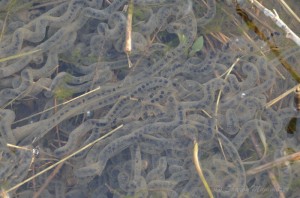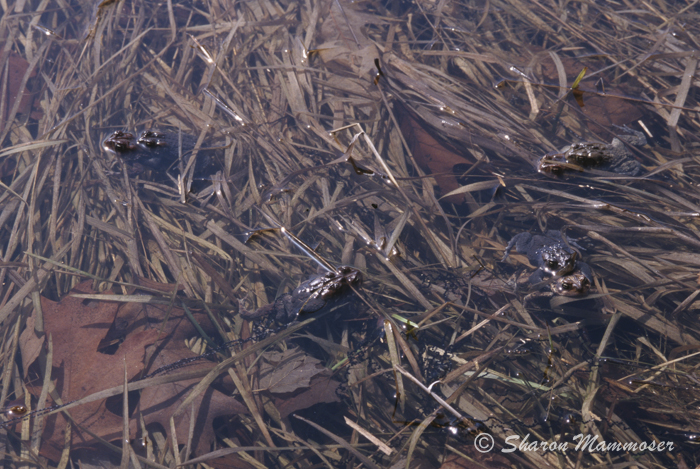I’m not sure where the idea began that touching a toad could give you warts, but like many of the things we think we know about nature, it is just another myth. Touching a toad will not give you warts! Touching a toad may cause it to pee on you or secrete a milky toxin and sometimes the oils on your skin may be bad for the toads so it is best to just avoid touching them anyway.
This week’s Creature Feature is the American Toad. Here are some other things you may not know about toads:
1. Toads can secrete a milky toxin from glands behind their eyes (called parotid glands) that irritates the mouth or eyes of a potential predator. (Another reason not to touch them as some people could have an allergic reaction to this toxin.) Other defense tactics include urinating on a predator, playing dead or puffing up their body to appear larger.
2. Toads breed in early spring, usually March or April. Like wood frogs and yellow spotted salamanders, they prefer ephemeral (temporary) bodies of water that lack fish.
 3. The males inflate their throats to make a long high-pitched trill that lasts anywhere from 4 to 40 seconds. Click here to hear the call of the American Toad: (From Lang Elliot of Nature Sound Studio)
3. The males inflate their throats to make a long high-pitched trill that lasts anywhere from 4 to 40 seconds. Click here to hear the call of the American Toad: (From Lang Elliot of Nature Sound Studio)
4. Male toads are smaller than females and males develop enlarged toe pads during breeding season. Fertilization is external, with the male releasing sperm as the female disperses the eggs. These come out in long skinny strands that may contain 2000-20,000 eggs!  Depending on the temperature of the water, they will hatch into tadpoles in 3-12 days. It then takes them from 4-6 weeks to absorb their tales, grow legs and develop lungs so they can leave the water and live on land.
Depending on the temperature of the water, they will hatch into tadpoles in 3-12 days. It then takes them from 4-6 weeks to absorb their tales, grow legs and develop lungs so they can leave the water and live on land.
5. The diet of a toad changes depending on its stage of life. In their tadpole stage, toads are herbivores, feeding on algae. As adults they are carnivorous, feeding on small insects and other invertebrates. They have a sticky tongue to catch prey in mid air and in just one day can eat 1000 insects.
6. The main predator of toads is snakes, especially the hognose snake which is a toad specialist and isn’t bothered by the toxin. Raccoons, hawks, herons, and skunks also feed on toads.
7. Toads have 4 toes on the front legs and 5 toes on the hind legs. Their legs are shorter than those of frogs.
8. Toads have a remarkably long life span considering their small size of 2-41/2 inches long. They can live for 40 years but in the wild live an average of 5-10 years.
9.Toads are most active at night.
10. The color of a toad’s skin is highly variable from brown to tan and even reddish in color. It is affected by temperature, humidity and even stress levels.
References:


Just wanted to say I enjoyed reading this and gaining some knowledge on this toad i constantly find in and around my garden.
Bob, glad you found it helpful. Toads are common and great to have in your garden as they eat lots of insects and other garden critters. Thanks for taking time to write!